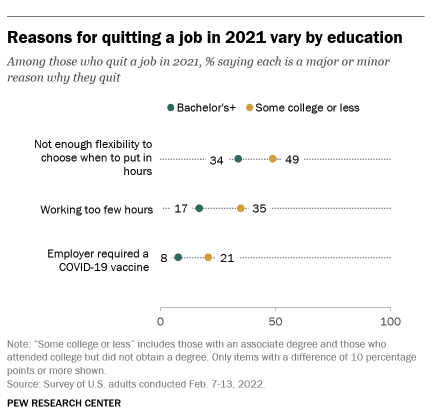How zero-touch onboarding impacts employee retention
August 25, 2022
5 minute read

Before I joined BetterCloud, I wrote a lot about hiring trends. Before I wrote about hiring trends for a living, I was a recruiter. And in both of those jobs, my teams were responsible for understanding how to attract top talent—and more importantly, how to retain your best employees.
I assumed I’d never write about employee retention again, given all the incredible technology we have to discuss on this blog. But as we continued to write about the importance of automating your onboarding process, we started to wonder how a zero-touch IT mindset addresses some of the biggest challenges in employee retention.
As a fun exercise, I dug up a few employee retention stats that I used to cite several times per week in my previous role. Let’s review just a few of them and discuss how your onboarding workflows assuage any concerns you might have about falling prey to the most common challenges of employee retention.
Zero-touch onboarding enables a positive (and rare) onboarding experience
It would be easy to assume that most companies provide an onboarding experience that you’d consider to be “good enough.” But in 2018, Gallup found that only 12% of employees strongly agree that their organization does a great job of onboarding new employees. Gallup also reported that this problem was exacerbated by the uptick in remote work that began at the beginning of 2020.
This is a three-year-old statistic, but it’s still cited by HR and IT departments around the world as a primary reason for overhauling and automating their employee onboarding programs. Last year, we learned that electric scooter company Voi was relying on two interns to handle the new hire onboarding process. Not surprisingly, Voi told us that it took roughly two weeks just to prepare to onboard a new employee.
We had to make sure that people did it at eight o’clock in the morning and sent out passwords. To automate that and not have to rely on people to be in the office and not out sick, for example, was the main goal.” – Alex Tsarapatsanis, Head of IT at Voi
You can probably guess where we’re going here. Today, Voi uses BetterCloud to automate its sophisticated onboarding process. With BetterCloud’s zero-touch workflows, Voi’s IT team triggers its onboarding process from its HRIS and automates 142 steps that would otherwise have been completed manually. Carl Michael Strauss, IT team lead at Voi, told us that now that they rely on BetterCloud to handle its onboarding process, the only thing stopping the team is its imagination.
Speaking of your imagination, check out this episode of The SaaSOps Show to get your creative juices flowing and learn how you can automate your way to a best-in-class employee onboarding experience.
It’s no secret that improving the onboarding process is a priority for HR and IT departments. But why does it matter so much? And as we promised in the title of this blog post, what impact does it have on retention? Let’s take a look.
Employees that can be productive on Day 1 are more likely to stay
Stop us if you’ve heard this before: Zero-touch onboarding workflows enable new employees to get up to speed quickly and be productive on their first day of work. In just a couple of clicks, IT can give them access to all of the apps, groups, calendars, and devices they need to do their jobs. That’s an obvious net positive for your business, especially considering that new hires have a productivity rate of roughly 25% during their first 30 days of employment.
But how the heck does it impact employee retention? To answer this question, we have to look at the reasons why people are leaving their jobs.
According to a study conducted by the Pew Research Center, workers who quit their jobs in 2021 cited some typical reasons, including low pay and few growth opportunities. But what’s most striking about the report is that 30% of respondents said they were working too few hours.

Wait, people are complaining about not working enough? While that might sound absurd to many people, there are several ways that manual onboarding can impact an employee’s ability to do their job—and eventually, that’ll lead to a good amount of frustration.
Take Wave’s experience with BetterCloud as an example. Wave’s IT team uses our platform to automate the entire user lifecycle, which they say made it easy to transition to a remote-first work environment. Even simple tweaks like automated emails have kept their teams more productive than they could have imagined.
Thomas Janz, IT manager at Wave, told us that their communication with managers is fast and consistent thanks to zero-touch onboarding. Janz adds, “Whether it’s a conversation with HR about a new hire or with a manager about an employee’s maternity leave, we can create tickets based on specific events and take action quickly.”
This is a pretty easy formula to unpack. Onboarding workflows get employees productive quickly. Mid-lifecycle workflows keep them productive. When your staff is productive, they’re less likely to complain about working too few hours—and more importantly, research shows they’re less likely to leave.
Onboarding workflows decrease the costs of backfilling critical roles
In my previous job, we cited the aforementioned Gallup study on employee onboarding almost every day. I write this to say, buckle up for some more stats from that 2018 study—and in just a minute, you’ll see why we’re going back to the well.
OK, so what happens when your onboarding process isn’t up to snuff? Roughly a third of all new employees don’t last more than 90 days on the job, and senior-level hires stay at their organizations for roughly 18 months. Additionally, 56% of IT pros are considering leaving their jobs for more automation-friendly orgs so they can learn or advance their automation skills.
Of course, those short tenures take a toll on the teams left to pick up the slack. But here’s where the financial costs of zero-touch onboarding become abundantly clear. The Society for Human Resources (SHRM) estimates that it costs a company roughly 6 to 9 months of an employee’s salary to backfill their position. The figure that gets cited most often is that it costs an organization between $30,000 and $45,000 to replace an employee earning $60,000 per year. This number accounts for recruiting costs and the productivity lost until someone accepts the vacant position.
That’s not chump change. But in a recent conversation with our IT Director Brian Farrell, we chatted about how tricky it can be to onboard software engineers properly. Not only do they need access to a lot of tools to do their jobs well, but they’re also in insanely high demand. When an engineer is unhappy with their job, they can usually find a handful of organizations that will happily take them on.
So imagine that five developers decide to leave your company early and that all of them cited their poor onboarding as a primary reason for their departure. The average software engineer’s salary in 2022 is $110,000 per year. Let’s break down what replacing those engineers would cost your organization:
- 6 to 9 months of one typical engineer’s salary: Between $55,000 and $82,000
- The cost of replacing five software engineers: Between $275,000 and $410,000
That’s quite a hit to any company’s bottom line. In a world where onboarding is flawed at most organizations, it’s not a stretch to say that this is a common cost of doing business. It’s also easy to see the financial impact that a zero-touch onboarding experience can have on your entire company. Not only can your automated workflows get new employees up to speed more efficiently, but they also set them up for long-term success—and save the organization an eye-watering amount of money.
IT’s critical role as a strategic business partner
We’ve written ad nauseum about how IT has evolved from mere ticket takers into critical strategic business partners across your organization. It has long been clear that IT plays a critical role in equipping teams with the tools they need so they can be as productive as possible.
However, research also shows that there are significant financial benefits to automating your onboarding experience. Not only does a zero-touch IT mindset create a best-in-class experience, but your onboarding workflows have a dramatic impact on your ability to keep employees happy and retain them over the long term.
Want to learn more about how BetterCloud can help you improve your onboarding experience and impact your employee retention? Schedule a demo.







